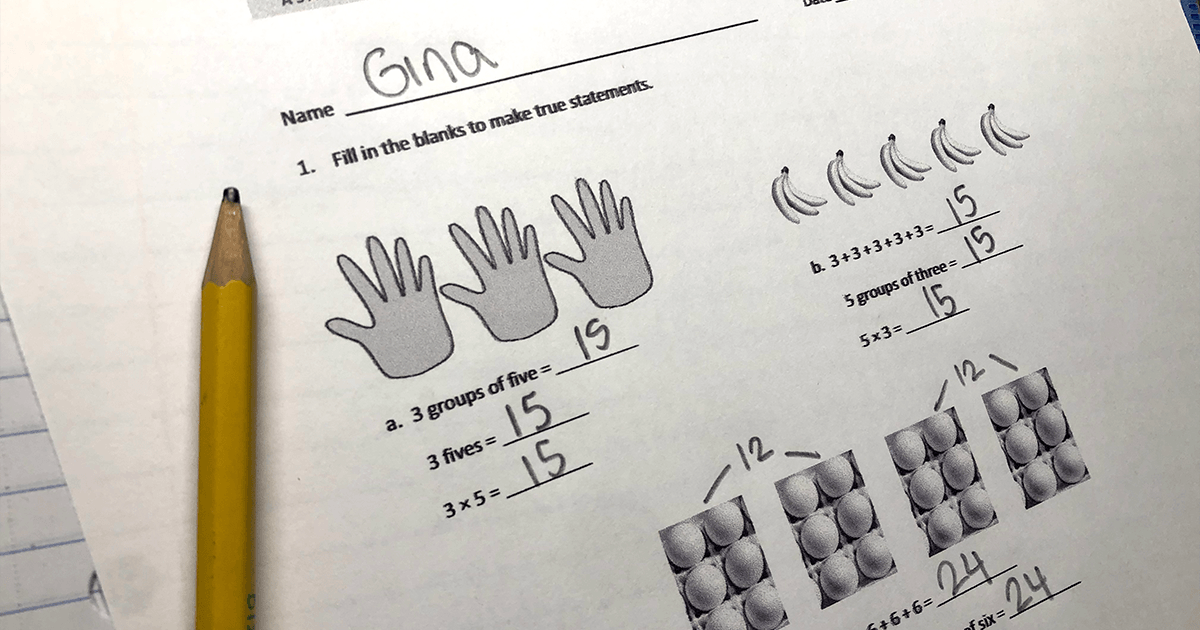Posted in: Aha! Blog > Eureka Math Blog > Instructional Design > Problem Sets: Time Frame Not Task Frame
FROM THE FIELD
What do we all need more of? TIME! Whether it is time to finish projects in our personal or professional lives, I don’t think I have ever heard anyone say there is plenty of time to get everything finished, especially when it comes to teaching.
At a recent professional development event, I presented about preparing and customizing a lesson. The teachers in the audience had taught Eureka Math for almost three years. A majority liked the curriculum, however, the problem came down to the “million dollar” question every teacher struggles with: How do I fit all of the components in 60 minutes (or 50 minutes in Kindergarten) per day? Once our discussion turned to the problem set, it was clear why time was the problem. The teachers required students to complete the entire problem set, instead of giving the allotted ten minutes.
Problem Sets are intentionally set within a time frame and not a task frame. Each problem set moves from simple to complex creating differentiated practice. Students above grade level will most likely complete more problems, which will challenge them due to the minimized scaffolding and more abstract work as they work across the page. Students working at grade level may complete half of the problem set, providing practice with the strategies taught throughout the Concept Development. Students working below grade level should be able to successfully complete the first couple of problems due to the extra scaffolding. In each Eureka Math lesson, after the Concept Development, is a brief explanation of the problem set, along with a student sample. Consider the third grade example below:

Problem Set (10 minutes)
Students should do their personal best to complete the Problem Set within the allotted 10 minutes.
Some problems do not specify a method for solving. This is an intentional reduction of scaffolding that invokes MP.5, “Use Appropriate Tools Strategically.” Students should solve these problems using the RDW approach used for Application Problems.
For some classes, it may be appropriate to modify the assignment by specifying which problems students should work on first. With this option, let the purposeful sequencing of the Problem Set guide the selections so that problems continue to be scaffolded. Balance word problems with other problem types to ensure a range of practice. Consider assigning incomplete problems for homework or at another time during the day.

The idea behind Problem Sets is to give students independent practice after the Concept Development to practice strategies taught. Ten minutes is given to ensure that time is not wasted. Expecting students to complete the Problem Set will not ensure success. The goal is to have students correctly practice strategies learned independently. Once students are given time on the Problem Set, the lesson moves on to the Debrief. The Debrief is essential in order to discuss the Problem Set and correct any misconceptions. What better way for students to learn than by listening to peers talk about the strategies used in solving problems and discussing their own thoughts about math? Generally, teachers want students to complete all work successfully in order to move on to the next lesson. It is not necessary for all students to have mastery of the strategies taught in order to move on. The same idea also applies to the Problem Set.
Teaching is all about building a community of excited learners. Motivating students to learn is invaluable. When every minute counts in the classroom, making students complete an entire worksheet is not time well spent. It is necessary to provide independent practice time because students need to know how to work independently. The real benefit is the Debrief afterward. Talking about the strategies used and how problems are solved is what creates those “aha” moments that students never forget. So, the next time you hand your students a Problem Set, look at the clock or set the timer and stop them after ten minutes. Give yourself and your students the gift of a “time frame.”
This post is authored by Eureka Math teacher-writer Shelley Petre.
© Great Minds 2016
Submit the Form to Print

Shelley Petre
Topics: Instructional Design











